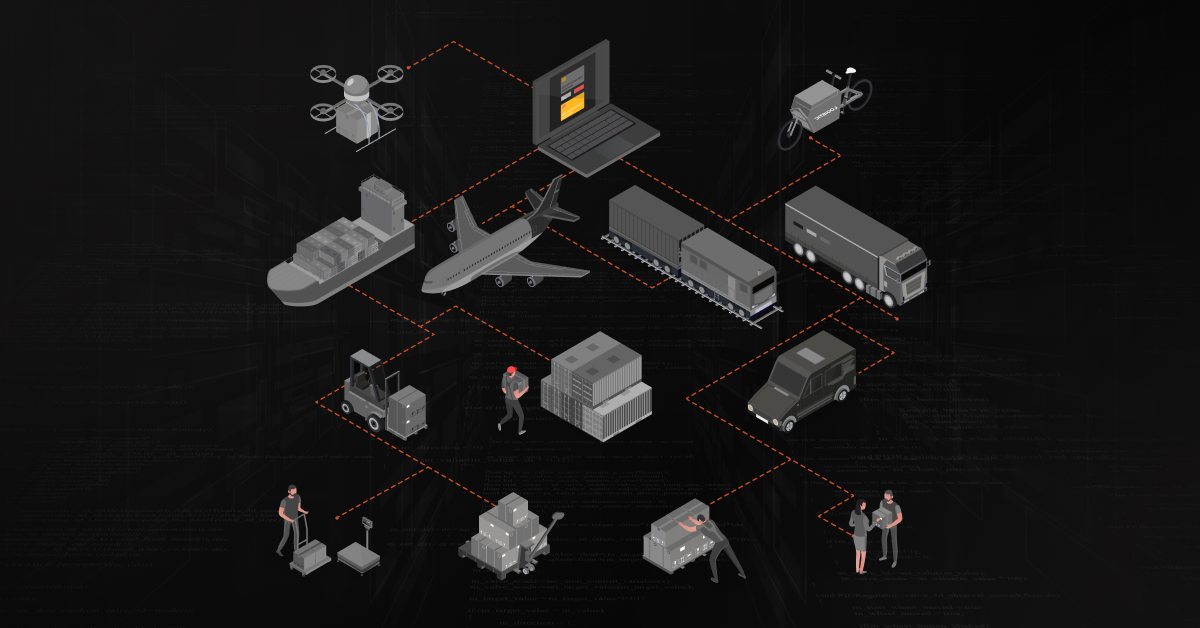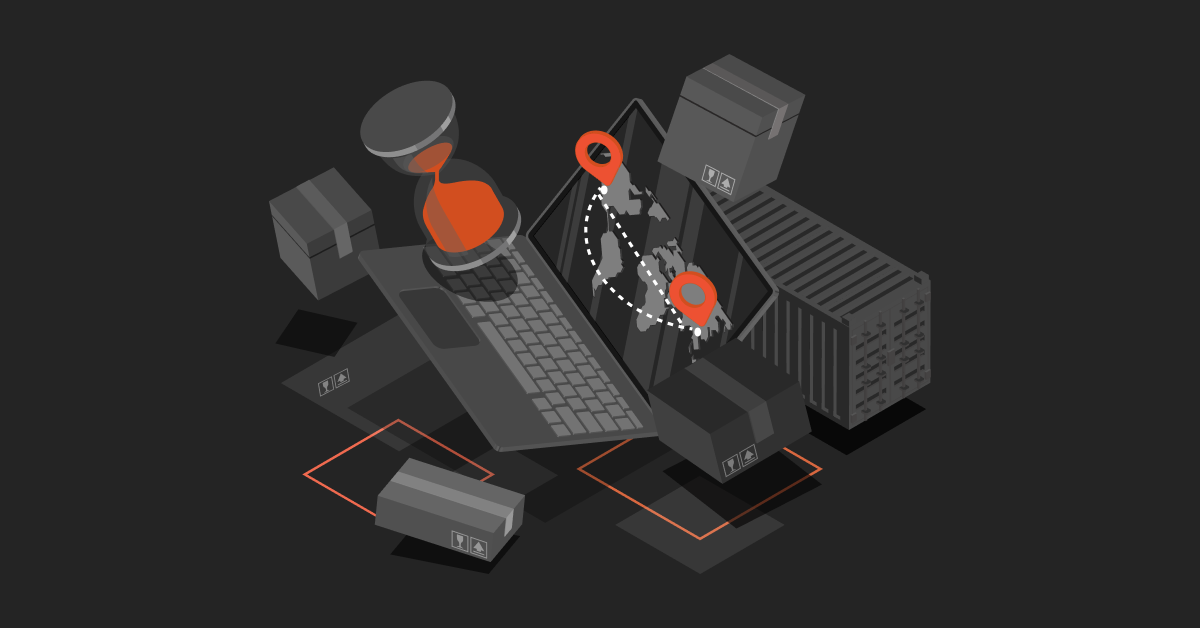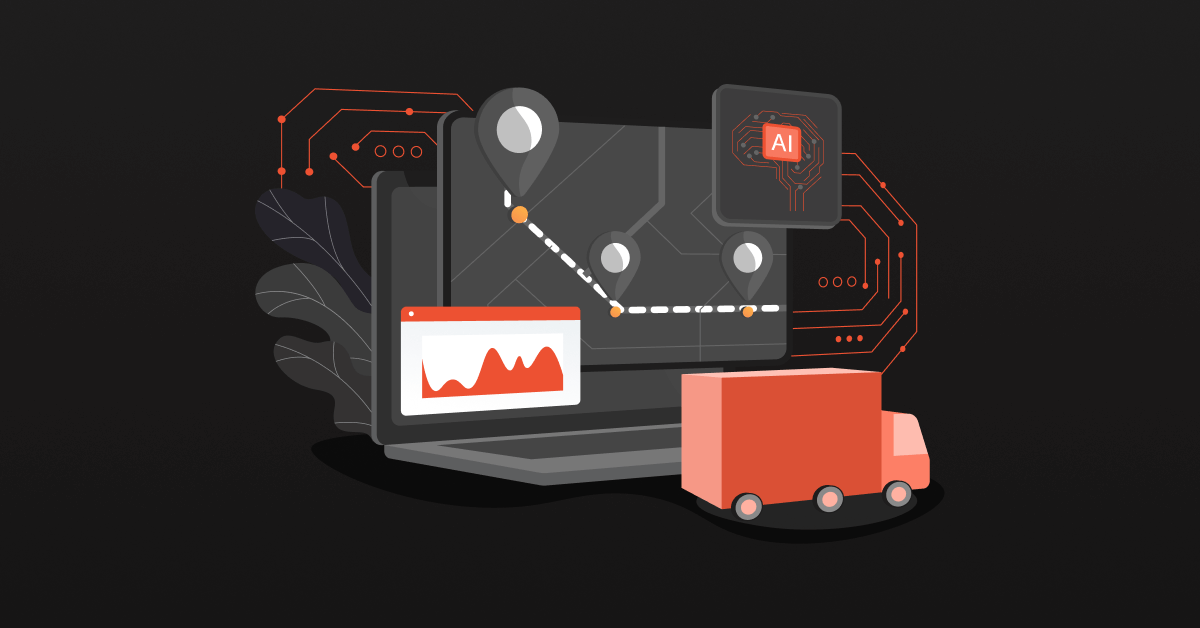A supply chain disruption is a major breakdown in the production or distribution of products in a supply chain. A supply chain breakdown can occur for one or many reasons such as fire, machinery breakdown, pandemics, natural disasters, logistical issues, product issues, or an unexpected surge in capacity. This may lead to reduced productivity, increased expenditure, customer and employee dissatisfaction etc.
Supply chains lack the resilience required and are breaking down in the case of multi-country lockdowns and disruptions. Adding to this they are also becoming costlier and are have reduced sustainability.
Not all supply chain disruptions are classified as equal. Usually, all supply chain disruptions are measured based on their probability and severity. This varies based on the chain and the industry it operates in.
For distributors and manufacturers, this can mean shipping delays, extended delivery times, mismatched inventory levels in warehouses and stores, and increased costs, and higher prices for their customers. While some disruptions are predictable, like sudden holiday demand, others can catch you off guard — think of global pandemics, major weather events, security breaches, or sudden labor strikes.
Contents
Types of Supply Chain Disruptions: Understanding the Risk Factors
Global supply chains are complex and interdependent; span locally and globally across regions, countries, and continents. With such an intricate network, it won’t be wrong to say that supply chains are as strong as their weakest link.
Supply chain disruptions and they can be broadly classified into two categories—external factors and internal factors.
External Risks
External risk factors arise outside of the company and the company is not able to control them. These can include wars natural disasters and others.
- Adverse weather conditions and natural disasters: Earthquakes, hurricanes, floods, wildfires, and torrential rains can damage supply chain infrastructure and transportation networks. This can impact production or distribution operations. For instance, the earthquake and tsunami that struck Japan in 2011 disrupted the supply chains across different locations and industries, particularly automotive and electronics.
- Pandemics: During COVID-19, business owners witnessed closed international borders, travel restrictions, factory closures, and labor shortages across the globe. For example, Apple faced supply chain disruptions in 2020 due to the pandemic. The closure of factories in China, where many of Apple’s products are manufactured led to delays in production and shipment of iPhones and other devices.
- Geopolitical tensions and wars: Historically, geopolitical instability and conflicts have caused trade disputes, political unrest, sanctions, and any sudden change in government policies. Recent Russia-Ukraine and Israel-Iran conflicts are no different.
- Cyber attacks and IT security threats: Cyber attacks, data breaches, or ransomware attacks that target critical networks and IT systems are difficult to control. They can not only compromise sensitive information and cause financial losses but also disrupt supply chains. For example, the NotPetya cyberattack in 2017 disrupted operations at several multinational companies.
- Logistics and transportation delays: Transportation delays due to bad weather, strikes, vehicle breakdowns, post closures, increased fuel prices, or route congestion are not unheard of. When the container ship Ever Given blocked the Suez Canal, global trade and supply chains were disrupted, leading to delayed deliveries and increased shipping or transportation costs.
- Global economic and political factors: Factors such as trade barriers, tariffs, changes in trade agreements between countries, currency fluctuations, inflation, or changes in demand can affect consumer behavior, market conditions, and supply chain dynamics.
Also read: 6 Key Problems in Distribution Today [2024]
Internal Risks
These risk factors on the other hand can be managed, reduced, or controlled by the company.
- Production and quality control issues: Manufacturing defects in products, any disruptions during the production process such as machinery breakdown, raw material deficit, or failed product quality tests—all these issues can cause delays and shortages in the supply chain.
- Management or business changes: When a company reshuffles its management or faces high employee attrition, it loses valuable time, institutional knowledge, and experience. These losses disrupt the production process and slow down the entire system.
- Lack of contingency planning: Every company must plan and prepare for contingencies and worst-case scenarios that can hamper its streamlined processes. Such emergencies can lead to delay in the planned delivery of goods and services.
- Labor strikes: Any workforce strike, dispute, or even shortage can disrupt your operations and production schedules.
- Human errors: Manual errors during data entry can result in inaccuracies or miscalculations that can have a long-term impact. For example, if an entry is wrongly added to the system while placing raw material orders or updating shipping details, it can result in reduced cost efficiency and shipping delays respectively.
- Supplier reliability: If you are working with unreliable suppliers, you can expect delays or disruptions if they fail to deliver raw materials or components at the right time.
Also read: Disintermediation in the Distribution Industry
Strategies for Mitigating Supply Chain Disruptions
Here are some measures you can take to mitigate both external and internal potential risk factors.
Risk Assessment and Planning
Conduct thorough risk assessments to identify potential disruptions and their impacts on your supply chain. You should develop comprehensive contingency plans to address both external and internal risks.
Supplier Diversification
Relying on a single supplier for components or raw materials is risky. Diversify your supplier base and evaluate alternative suppliers and backup options to mitigate these vulnerabilities.
Collaboration and Communication
Foster strong, transparent relationships with your suppliers, logistics partners, and stakeholders. Maintain open communication channels to share information, coordinate responses, and address issues promptly.
Increasing Supply Chain Visibility
You can consider integrating real-time data software solutions to boost transparency across your operations and supply chain. Track inventory levels, monitor supplier performance, and identify potential disruptions early for smooth operations.
Maintaining Backup Inventory
Keep a backup inventory, or safety stock, to protect your operations against supply delays or demand spikes. Although it results in additional costs, maintaining a buffer stock helps prevent shortages.
Monitoring Supplier Performance
Regularly monitor your supplier performance to pinpoint issues and provide informed feedback. This proactive approach will help improve your control over supplies and streamline business processes.
Scenario Planning and Simulation
Conduct scenario planning exercises. This involves simulating potential disruptions and testing the effectiveness of contingency plans. You can utilize historical data, predictive and prescriptive analytics, machine learning, and modeling techniques to anticipate and prepare for future disruptions.
Building Supply Chain Resilience
Make sure to invest in resilience measures such as improving backup production facilities, identifying alternative transport routes, finding alternate suppliers, and enhancing logistical networks.
Continuous Monitoring and Improvement
Regularly monitor supply chain performance and evaluate risk indicators. You can conduct post-disruption reviews to assess your response effectiveness and implement learnings for continuous improvement.
Investment in Automation, Technology, and Innovation
Invest in advanced technologies like integration software, IoT (Internet of Things), blockchain, and AI to enhance supply chain visibility and efficiency. Embrace technological innovations to stay ahead of the curve.
Recommended read: ERP In Supply Chain Management: A Distributor’s Guide
Supply Chain Efficiency and Risk Reduction: What Is the Difference?
Your supply chains need to be efficient and resilient against disruptions, and this can be achieved through effective risk-reduction strategies. But what exactly do supply chain efficiency and risk reduction mean?
Efficiency in the supply chain means running operations at the lowest possible costs and keeping inventory levels low. This may involve minimizing duplicate routes, facilities, and safety stock (extra inventory kept as a precaution). On the other hand, risk reduction means identifying potential supply chain risks, taking measures to mitigate them, and preparing response plans.
B2B businesses, thus, need to strike a balance between efficiency and risk reduction. They need to find ways to keep costs down while ensuring their operations are not affected by unexpected supply chain disruptions.
How Integration Can Help Manage Supply Chain Disruptions
When you integrate various systems and processes within your supply chain, it can significantly enhance its resilience and efficiency. Seamless connected parts of the supply chain mean better communication, real-time data sharing, and quicker response times to disruptions.
Ecosystem integration also helps in breaking down silos between suppliers, manufacturers, and distributors, ensuring a more synchronized operation.
Here’s what you can achieve by integrating supply chain processes.
- Enhanced visibility: With access to real-time inventory levels, shipment times, and production status, you can easily identify potential issues before they escalate.
- Improved collaboration: By ensuring seamless communication between all stakeholders, integration facilitates better coordination and quicker resolution of problems among the teams.
- Efficient data management: Consolidated data from various sources provides a comprehensive view of the supply chain. This can empower you for informed decision-making.
- Faster response times: With integrated systems, your business is better equipped to make rapid adjustments to production schedules, inventory levels, and distribution plans in response to disruptions.
DCKAP Integrator Can be a Game-Changer
DCKAP Integrator, a high performing ERP integration platform, can play a transformative role in enhancing supply chain management. This platform connects disparate systems, enabling smooth data flow and operational efficiency.
With DCKAP Integrator, you can:
- Automate data synchronization: Automatically synchronize data across various platforms, reducing manual errors and ensuring consistency.
- Streamline operations: Integrate ERP (Enterprise Resource Planning), CRM Customer Relationship Management), SCRM (supply chain risk management), inventory management software, and other essential systems to streamline and improve overall supply chain management.
- Boost visibility: DCKAP integrator can help provide real-time insights into inventory, orders, and shipments. This enables proactive management and quick response to disruptions.
Conclusion
For staying competitive and running your business smoothly, it is crucial to effectively manage supply chain disruptions. Understanding what causes these disruptions and the risks involved can help you create strategies to lessen their impact.
Here, ecosystem integration can prove to be a game-changer. It boosts visibility, flexibility, and collaboration across your supply chain, helping you handle disruptions more efficiently. By proactively using advanced technologies and tools like DCKAP Integrator, you can build a resilient supply chain. To know more about how DCKAP Integrator can work for you, get in touch with us today.




